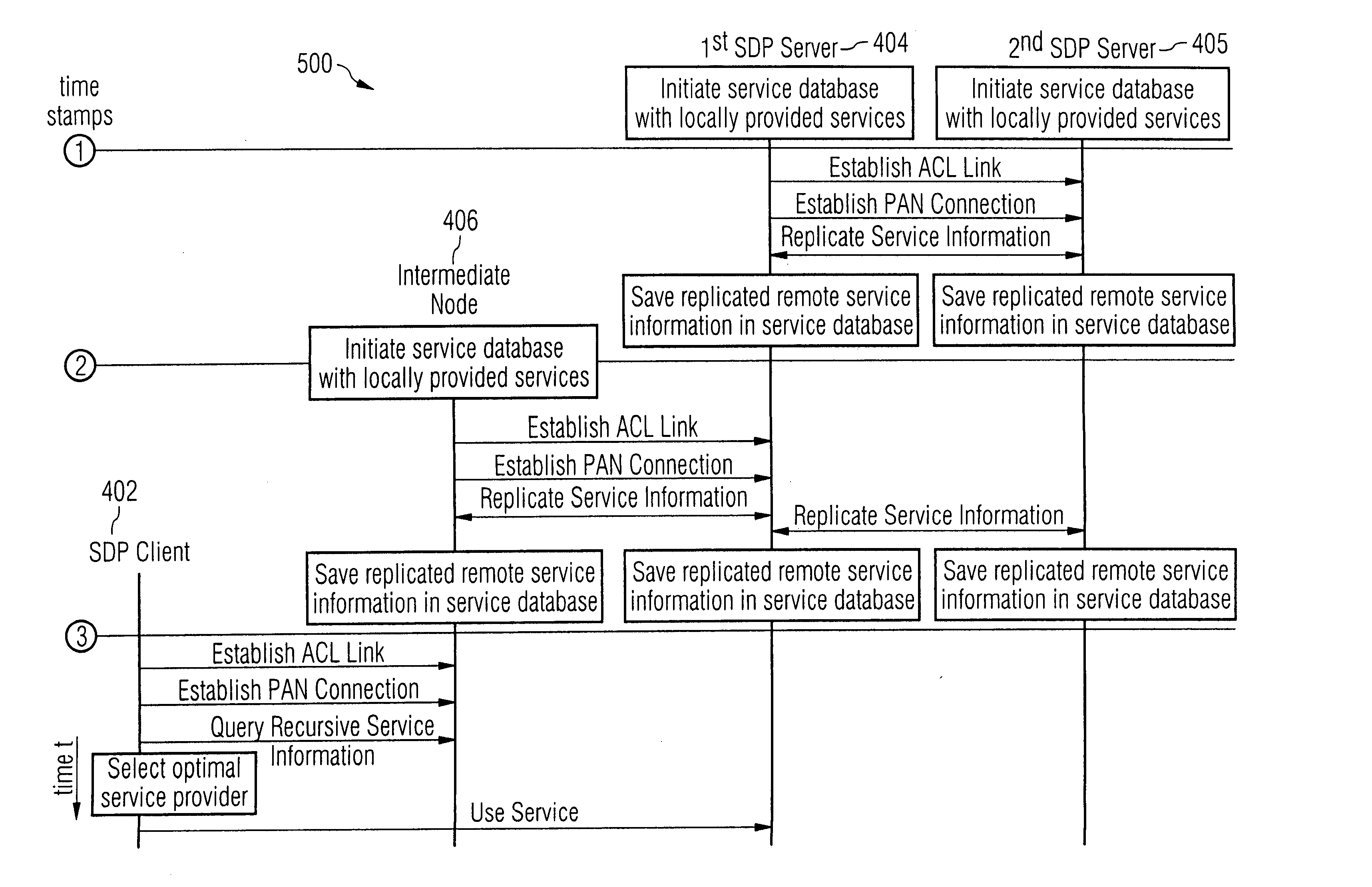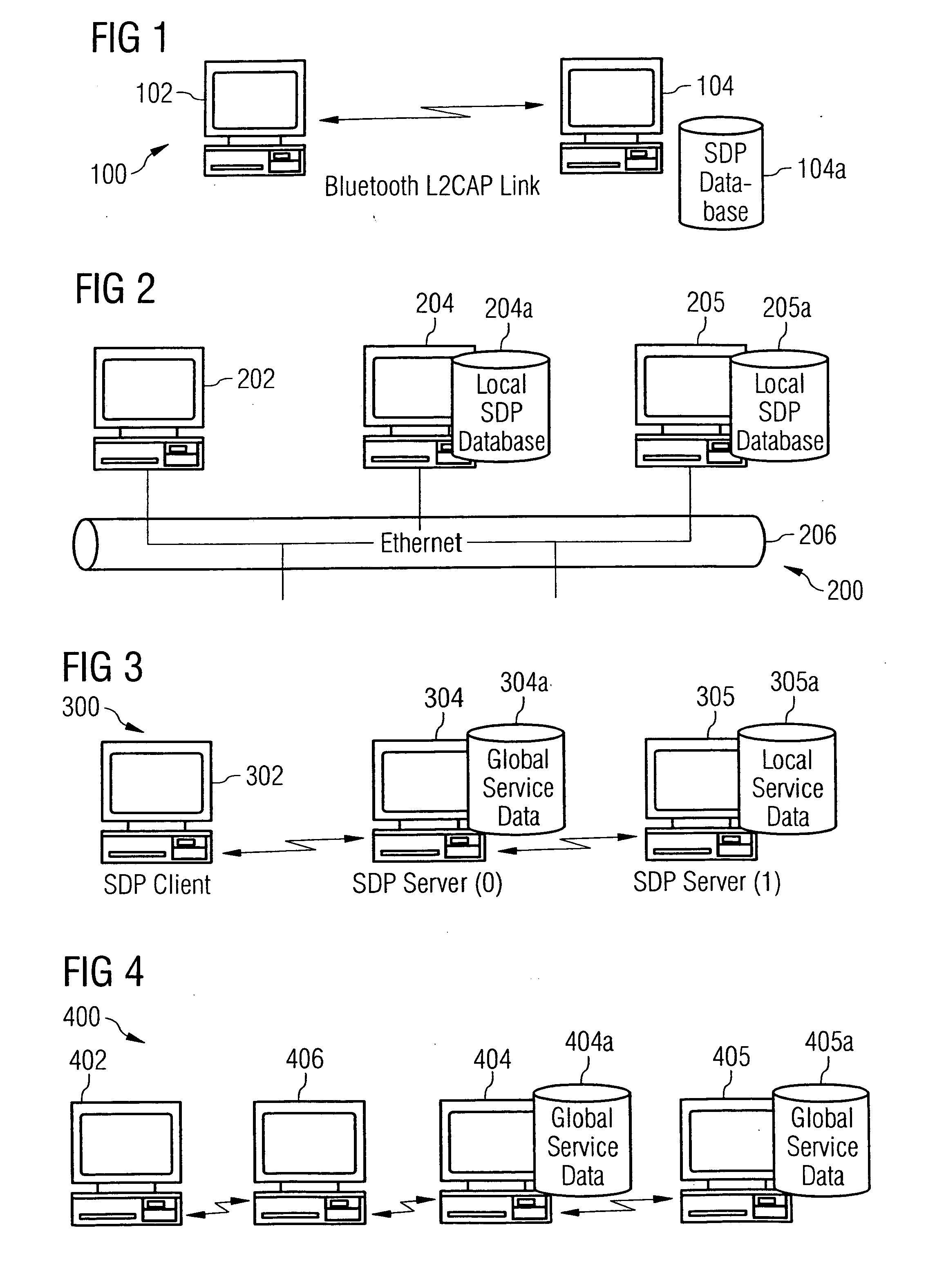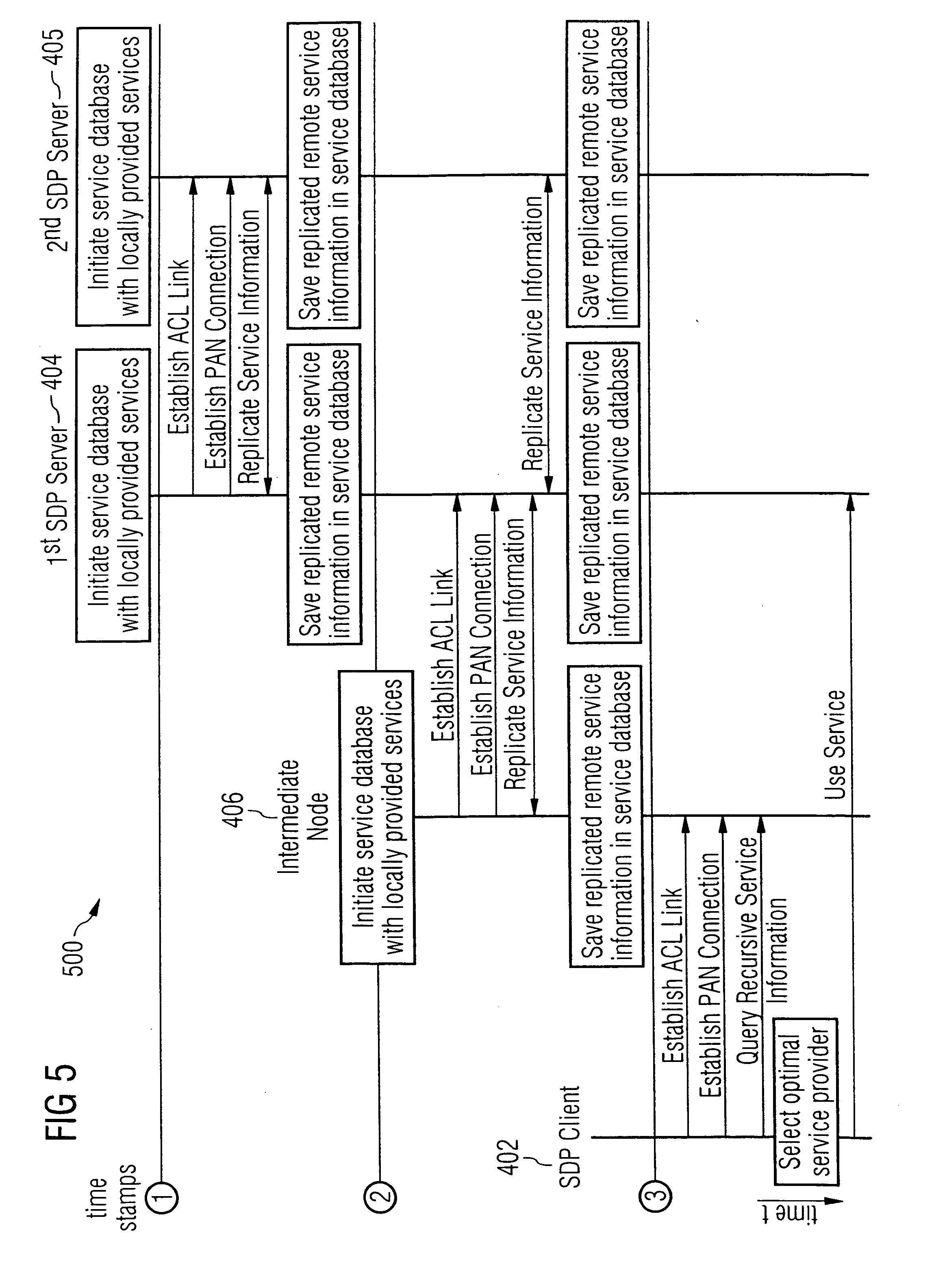Distance-aware service discovery mechanism for determining the availability of remote services in wireless personal area networks
- Summary
- Abstract
- Description
- Claims
- Application Information
AI Technical Summary
Benefits of technology
Problems solved by technology
Method used
Image
Examples
Embodiment Construction
[0039] In the following, embodiments of the present invention as depicted in FIGS. 3 to 6 shall be explained in detail. The meaning of the symbols designated with reference numerals that are depicted in FIGS. 1 to 6 can be taken from an annexed table.
[0040] According to one embodiment of the invention, service discovery information is dynamically adapted (S3) to information concerning varying resource availability and / or changing link characteristics within wireless multi-hop networks. In this connection, cached service discovery information is marked as “active” (S3a) only as long as a file and / or application server 404 or 405 participates in a wireless communication session with the client terminal 402 of the respective service user. The information is marked as “inactive” (S3b) when the connection between said server 404 or 405, respectively, and the respective client terminal 402 is closed and a predefined time-out period has expired, thereby discarding (S3c) outdated service d...
PUM
 Login to View More
Login to View More Abstract
Description
Claims
Application Information
 Login to View More
Login to View More - R&D
- Intellectual Property
- Life Sciences
- Materials
- Tech Scout
- Unparalleled Data Quality
- Higher Quality Content
- 60% Fewer Hallucinations
Browse by: Latest US Patents, China's latest patents, Technical Efficacy Thesaurus, Application Domain, Technology Topic, Popular Technical Reports.
© 2025 PatSnap. All rights reserved.Legal|Privacy policy|Modern Slavery Act Transparency Statement|Sitemap|About US| Contact US: help@patsnap.com



